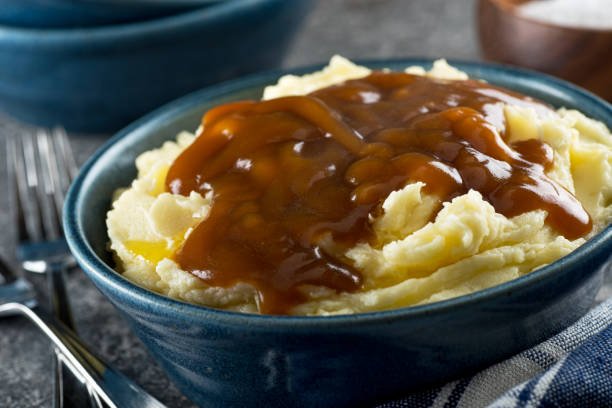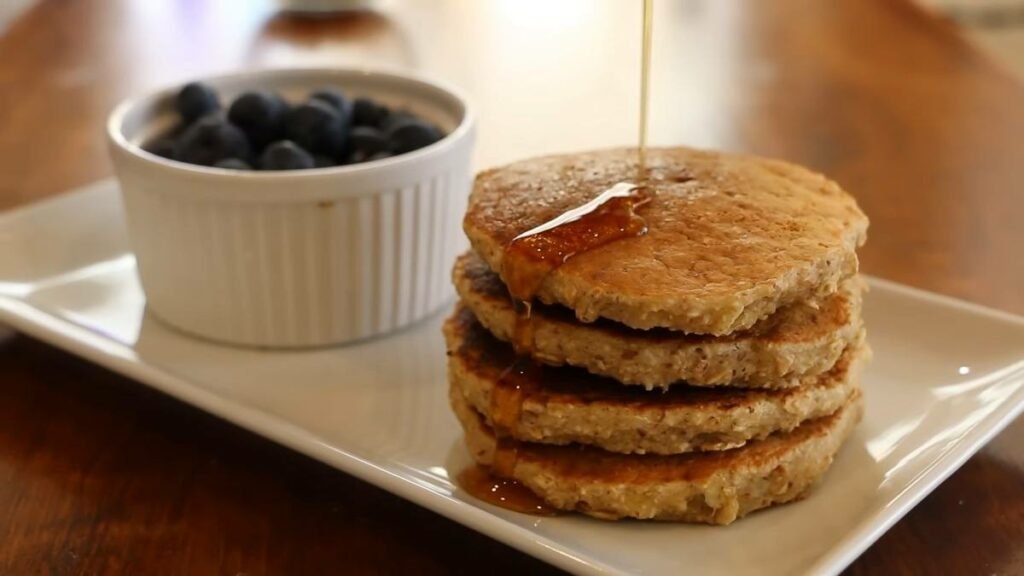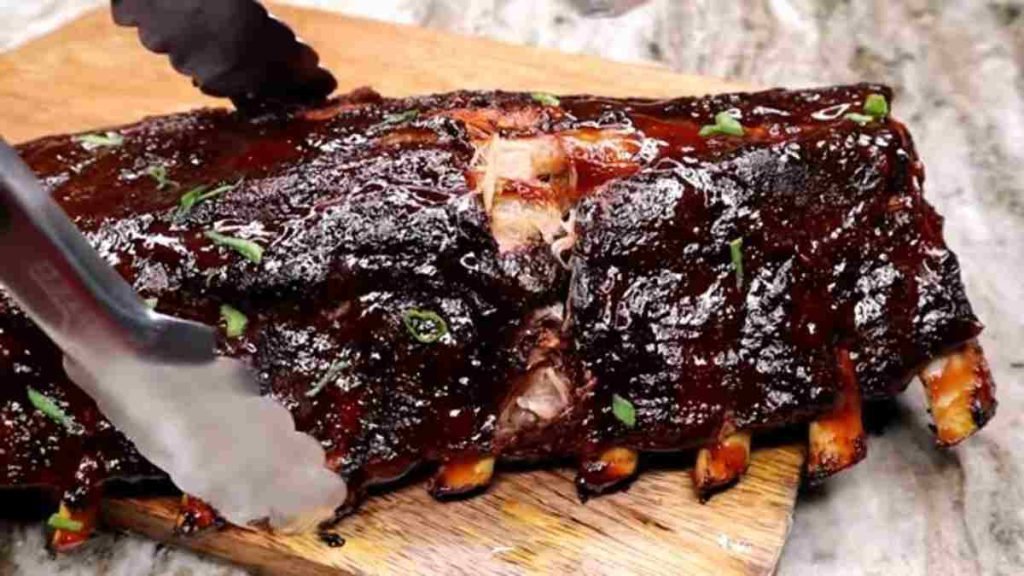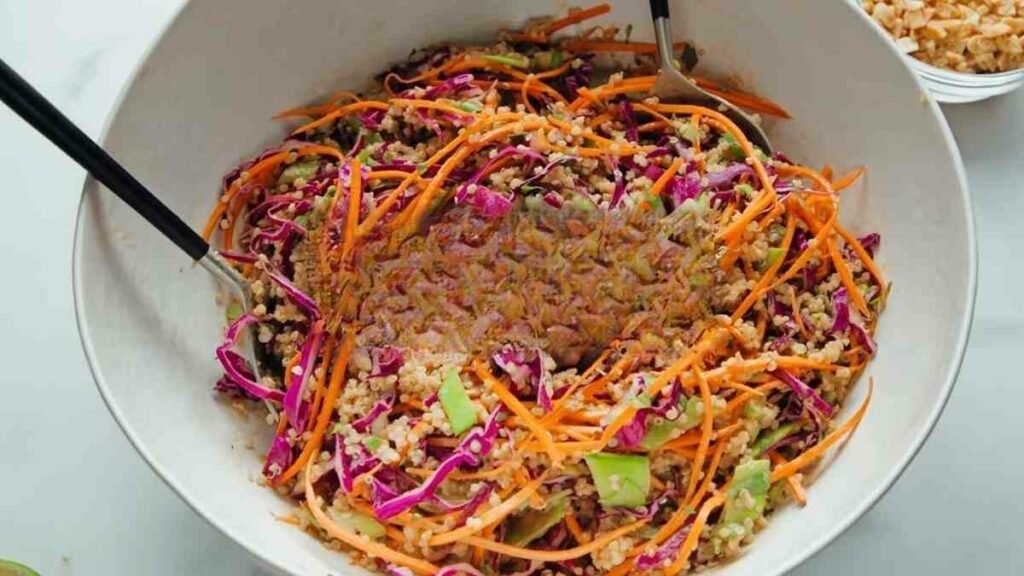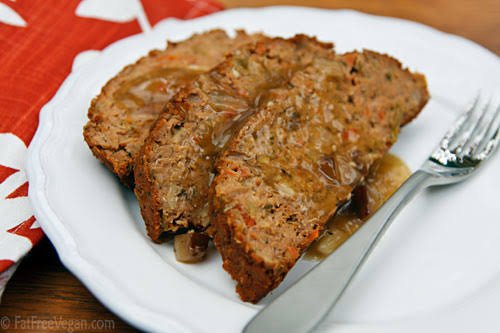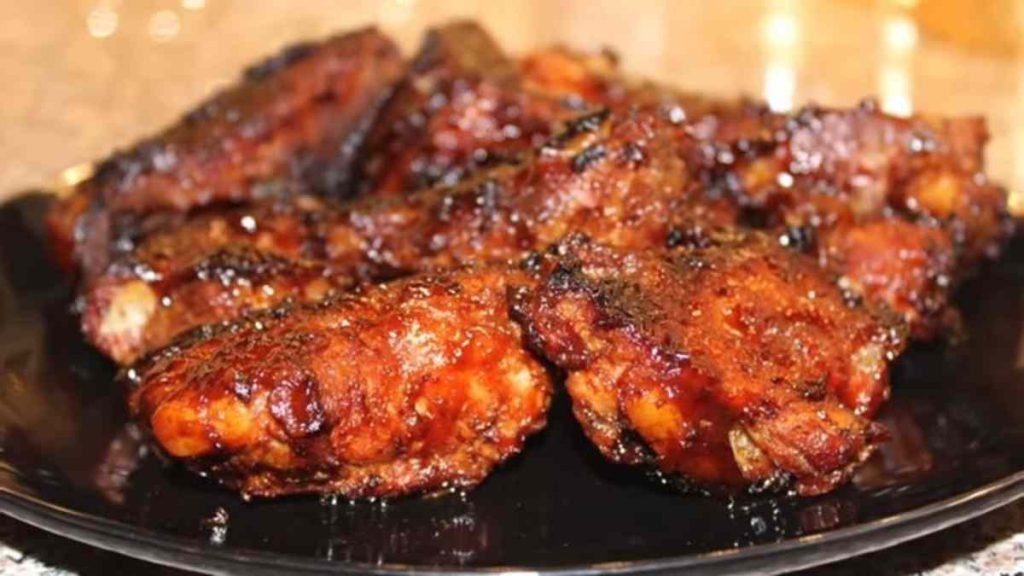White sauce, or béchamel sauce, is a classic and versatile sauce used in many cuisines worldwide. This sauce has three main ingredients: flour, butter, and milk. It is a popular ingredient in pasta dishes, casseroles, soups, and more.
This tasty meal originated in France as early as the 17th century. Over time, the recipe has been adapted and modified, adding different herbs, spices, and ingredients to enhance its flavor. Today, white sauce is a popular meal or addition in many cuisines worldwide due to its versatility, ease of preparation, and deliciously creamy flavor.
Ingredients/ Equipment Needed to Prepare a White Sauce

You need different ingredients and equipment when preparing a white sauce recipe. Let’s start with the ingredients. Here are some of the ingredients below.
- Butter is one of the major ingredients you need when making a white sauce. Butter enriches and flavors the sauce. It also thickens the sauce.
- All-purpose flour: When making a white sauce, you need at least one and a half tablespoons of flour. This thickens the sauce.
- Milk: basic non-fat milk will do in this case. This will form the base of the sauce and provide liquid for the flour to dissolve in
- Salt: A spoon or half a salt will do in this case. This enhances the sauce’s flavor.
- Black pepper: You need a bit of pepper to give a subtle, spicy flavor to the sauce
- Heavy cream: Like butter, cream is an essential ingredient in this recipe. One and a half tablespoons of cream should enhance the taste.
While these are the basic ingredients, you might need other ingredients, depending on the variation or adaptation of the white sauce you wish to prepare. Here are some of them below.
- Cheese: This adds flavor and richness to the sauce
- Nutmeg: Nutmeg also adds a warm, sweet flavor to the sauce, depending on the white sauce you want to prepare.
- Garlic: Although this isn’t a popular ingredient, garlic adds a savory, aromatic flavor to the sauce
In addition to the ingredients listed above, you need some basic tools or equipment to prepare a white sauce. Here are some of the equipment listed below.
- Saucepan: A medium-sized saucepan is needed for sauce cooking. A heavy-bottomed saucepan is ideal as it distributes heat evenly and prevents sauce scorching.
- Whisk: You need a whisk to ensure the flour is fully incorporated into the sauce without lumps. I will recommend a balloon whisk for this task.
- Measuring cups and spoons: Measuring cups and spoons are necessary to measure the ingredients needed for the recipe accurately.
- Cutting board and knife (optional): If you intend to add extra ingredients, you might need a cutting board and knife, depending on the type of ingredients you intend to add.
Guide to Preparing White Sauce Recipe
Although cooking a great white sauce is relatively easy, many people make mistakes in the steps. This leads to the sauce not being great or awesome. Here is a step-by-step guide to cooking an excellent white sauce.
1. Melt the Butter in a Pan

This is the first thing you must do to prepare a white sauce. You must melt at least 1 ½ tablespoons of butter in your saucepan. You must set your gas or pan to medium or low heat to successfully do this. This will reduce the chances of butter bubbling, burning, or changing color.
Keep the heat at the lowest possible setting until the butter melts completely without burning. Also, stir the butter as it melts.
2. Add Flour and Stir Well

This is the next thing you must do to prepare the white sauce. You must add 1 ½ spoonfuls of flour once the butter is properly melted. Once you have added the flour, use your whisk to stir the mixture. Ensure they are fully blended without lumps. Make sure your cooker is at the lowest possible temperature while doing this.
The mix should also be cooked for one minute to ensure it is evenly pasted.
3. Add a Cup of Cream and Stir

Once you have followed the previous 2 steps, the next thing you must do is add a cup of cream to the saucepan. Keep stirring the entire mixture with your whisk to incorporate everything nicely.
4. Add Pepper and a Pinch of Salt

Adding necessary ingredients, such as pepper and a pinch of salt, is the next thing to do once you have incorporated the cream into the mixture. When adding pepper, remember not to put too much. This is mainly because too much might ruin the taste.
Once you have added the pepper, add a pinch of salt. Doing this is very important, improving the white sauce’s taste. Stir the ingredients into the mixture and wait for several minutes.
5. Turn on the Heat and Allow the Mixture to Thicken

This is the last thing to do if you want a good white sauce recipe. You should turn on the heat after following the previous 4 steps. Once you turn on the heat, stir the mixture gently with your whisk.
The mixture should get creamier after a couple of seconds. This means the sauce is about to set. Once it bubbles a little, you can turn off the heat.
What Are the Tips and Tricks for Cooking a Tasty White Sauce
You can use different tips and tricks to cook a tasty white sauce. Here are some tips you can follow.
1. Always Use a Whisk
When making a white sauce, it is important to use a whisk. This will prevent lumps from forming in the sauce. A whisk will help you evenly blend the flour and butter mixture with the milk, creating a smooth and creamy sauce.
2. Keep the Heat Low
This is another significant thing to do if you want a perfect white sauce. To avoid scorching or burning the sauce, keeping the heat low when cooking the sauce is imperative. You must also stir the sauce constantly to prevent sticking to the bottom of the pan.
3. Use Cold Milk
You can always use cold milk when making white sauce. This will prevent the sauce from becoming too thick too quickly. This also allows you to control the sauce’s stickiness.
4. Add Cheese for a Flavorful Twist
Although this is optional, adding grated cheese to a white sauce can create a delicious variation. Parmesan, cheddar, and Gruyere are tasty and popular choices for adding a rich and flavorful twist to your white sauce.
5. Experiment with Herbs and Spices
White sauce is an excellent base for experimenting with different herbs and spices. You can add different herbs or spices like garlic, nutmeg, thyme, or parsley to enhance the flavor and complement a variety of dishes. However, do not overdo it, as it might ruin the taste.
Nutritional Benefits of White Sauce Recipe
While it’s not known for being the healthiest ingredient, did you know that white sauce can have some nutritional benefits?
1. Rich in Calcium
Calcium is an essential mineral in maintaining strong bones and teeth. One of the primary ingredients in white sauce is milk, an excellent calcium source. A 1-cup serving of milk can provide around 30% of adults’ recommended calcium intake.
Therefore, a white sauce recipe made with milk can be an excellent way to increase calcium intake.
2. Good Source of Protein
Protein is a macronutrient that is necessary for building and repairing tissues in the body. Milk is also a good source of protein, with 1 cup providing approximately 8 grams of protein.
When combined with the protein from the flour used to make the roux, a white sauce recipe can provide a decent amount of protein per serving.
3. Provides Essential Vitamins
In addition to calcium and protein, the white sauce contains other essential vitamins and minerals, such as vitamin D, B12, and phosphorus. Vitamin D is necessary for maintaining strong bones and teeth, while vitamin B12 is important for producing red blood cells and maintaining healthy nerve function.
Phosphorus is another mineral necessary for healthy bones and teeth and plays a role in energy metabolism.
4. Can Be Made Healthier with Substitutions
While white sauce made with milk and butter can be delicious, it can also be high in calories and saturated fat. However, there are ways to make it healthier by using alternative ingredients. For example, you can use almond milk instead of cow’s milk to reduce the amount of saturated fat and calories.
You can also use olive oil instead of butter to increase the monounsaturated fat content and reduce the saturated fat content.
5. It Can Be Used to Incorporate More Vegetables
White sauce can be an excellent way to incorporate more vegetables into your diet. For example, you can use it as a sauce for a vegetable pasta dish or to make a vegetable gratin. Adding vegetables to your white sauce recipe can increase your intake of vitamins, minerals, and fiber.
White Sauce Recipe Serving Suggestions
It’s a versatile sauce that can be made with just a few ingredients, such as butter, flour, and milk. Once you’ve mastered making a creamy and delicious white sauce, the next step is deciding what to serve it with.
- Fettuccine Alfredo – Toss cooked fettuccine with the white sauce and top with grated parmesan cheese and chopped parsley. This classic Italian dish is simple yet satisfying.
- Creamy Mashed Potatoes – Mix the white sauce with boiled and mashed potatoes for an extra creamy and indulgent side dish.
- Baked Mac and Cheese – Layer cooked macaroni with white sauce and shredded cheddar cheese in a baking dish. Bake until the cheese is melted and bubbly for a comforting and satisfying meal.
- Creamy Chicken Casserole – Combine cooked chicken, mixed vegetables, and the white sauce in a casserole dish. Top with breadcrumbs and bake until golden brown for a hearty and flavorful dinner.
- Creamy Vegetable Soup – Use the white sauce as a base for a creamy vegetable soup. Add your favorite veggies like broccoli, cauliflower, or carrots for a healthy and satisfying meal.
- Creamed Spinach – Cook spinach in the white sauce until wilted and tender. Season with nutmeg and serve as a side dish to grilled chicken or steak.
- Cauliflower Gratin – Layer cooked cauliflower with white sauce and breadcrumbs in a baking dish. Bake until golden brown and serve as a delicious and healthy side dish.
- Creamy Mushroom Sauce – Sauté sliced mushrooms in butter until tender, then add the white sauce and simmer for a few minutes. Serve over grilled chicken, steak, or pasta for a rich and flavorful meal.
White Sauce Is Best Served With?
From pasta to gratins, the white sauce adds a delicious and smooth texture to any recipe. But what are the best dishes to serve with white sauce?
- Pasta – White sauce and pasta are a match made in heaven. Fettuccine Alfredo is a classic dish combining cooked fettuccine with a rich, creamy white sauce. You can also use white sauce in pasta dishes, like lasagna or baked ziti.
- Vegetables – White sauce can be a great way to make veggies more exciting. You can use it as a dipping sauce for steamed or roasted vegetables, like broccoli or cauliflower. Or, you can mix cooked vegetables, like spinach or mushrooms, with white sauce for a creamy and delicious side dish.
- Chicken – White sauce is a great accompaniment to chicken dishes. You can pour it over grilled or roasted chicken breasts or use it as a base for a chicken pot pie. You can also make a creamy chicken casserole by combining cooked chicken, mixed vegetables, and white sauce in a baking dish.
- Seafood – The white sauce can also be used with seafood dishes. You can use it as a dipping sauce for shrimp or scallops or mix it with cooked crab meat for a delicious crab dip. You can also use it as a base for a seafood lasagna or a creamy seafood chowder.
- Potatoes – The white sauce can make potatoes even more comforting and indulgent. You can mix it with boiled and mashed potatoes for creamy mashed potatoes or use it to make a cheesy potato gratin. You can also pour it over roasted potatoes or use it as a topping for a loaded baked potato.
- Bread – Mix it with eggs, bread, and cheese for a delicious breakfast or brunch dish. You can also use it as a spread on a sandwich or a topping for garlic bread.
- Rice – The white sauce can be a great way to make rice dishes more flavorful. Mix it with cooked rice and your favorite veggies or protein for a hearty and satisfying meal. You can also use it as a creamy and delicious risotto base.
Storage Tips for White Sauce
Storing white sauce can be challenging, especially if you want to maintain its creamy texture and flavor.
1. Cool the sauce quickly
Once you have made your white sauce, it’s essential to cool it down quickly. Leave it to cool at room temperature for an hour before transferring it to an airtight container.
Putting hot sauce directly into the fridge can cause condensation, making it watery and affecting the flavor.
2. Use airtight containers
When storing white sauce, it’s crucial to use airtight containers. This will help prevent air from entering the container and keep the sauce fresh. You can use plastic containers or glass jars with tight-fitting lids. Mason jars are also a great option for storing small amounts of sauce.
3. Label and date the container
Labeling and dating your white sauce container is always a good idea. This will help you track how long it has been stored and when it expires. Write the date you made the sauce and the use-by date on the container.
4. Freeze the sauce
If you’re not planning to use the sauce within a few days, it’s best to freeze it. The white sauce freezes well, but it’s essential to cool it down before freezing it. Divide the sauce into portions and store them in airtight containers or freezer bags. Label each container with the date and the amount of sauce.
5. Thaw the sauce correctly
When you’re ready to use the white sauce, it’s crucial to thaw it correctly. Remove the container from the freezer and place it in the fridge overnight. Avoid thawing it at room temperature or in the microwave, as this can cause the sauce to separate and become grainy.
6. Reheat the sauce gently
When reheating white sauce, it’s essential to do it gently over low heat. Heat the sauce in a saucepan, stirring constantly until heated. If the sauce is too thick, add a little milk to thin it out. Avoid boiling the sauce, as this can cause it to split and become grainy.
Can I Use a Substitute for Milk in a White Sauce Recipe?
Using a substitute for milk in a white sauce recipe is easy and can be done without sacrificing flavor or texture. Experiment with different milk substitutes to find the best one for your recipe and taste preferences.
How do I Prevent Lumps in my White Sauce?
To prevent lumps in your white sauce, start by whisking the flour and butter together thoroughly before adding milk. Add the milk gradually and continue to whisk constantly. If lumps form, strain the sauce through a fine-mesh sieve before serving.
What is the best type of cheese to use in a white sauce?
The best cheese to use in a white sauce depends on personal preference, but commonly used options include Parmesan, cheddar, and Gruyere.
Can you make a white sauce without using dairy?
Yes, you can make a white sauce without using dairy. One option is to use plant-based milk like soy, almond, or oat milk, combined with flour, vegan butter, or oil.
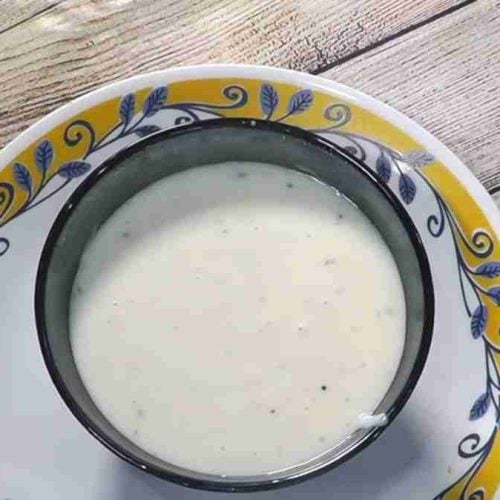
White Sauce Recipe
Equipment
- Saucepan
- Whisk
- Measuring cups and spoons
- Cutting board and knife (optional):
Ingredients
- Butter
- All-purpose flour
- Milk
- Salt
- Black pepper
- Heavy cream
Instructions
Melt the Butter in a Pan
- This is the first thing you must do to prepare a white sauce. You must melt at least 1 ½ tablespoons of butter in your saucepan. You must set your gas or pan to medium or low heat to successfully do this. This will reduce the chances of butter bubbling, burning, or changing color.
- Keep the heat at the lowest possible setting until the butter melts completely without burning. Also, stir the butter as it melts.
Add Flour and Stir Well
- This is the next thing you must do to prepare the white sauce. You must add 1 ½ spoonfuls of flour once the butter is properly melted. Once you have added the flour, use your whisk to stir the mixture. Ensure they are fully blended without lumps. Make sure your cooker is at the lowest possible temperature while doing this.
- The mix should also be cooked for one minute to ensure it is evenly pasted.
Add a Cup of Cream and Stir
- Once you have followed the previous 2 steps, the next thing you must do is add a cup of cream to the saucepan. Keep stirring the entire mixture with your whisk to incorporate everything nicely.
Add Pepper and a Pinch of Salt
- Adding necessary ingredients, such as pepper and a pinch of salt, is the next thing to do once you have incorporated the cream into the mixture. When adding pepper, remember not to put too much. This is mainly because too much might ruin the taste.
- Once you have added the pepper, add a pinch of salt. Doing this is very important, improving the white sauce’s taste. Stir the ingredients into the mixture and wait for several minutes.
Turn on the Heat and Allow the Mixture to Thicken
- This is the last thing to do if you want a good white sauce recipe. You should turn on the heat after following the previous 4 steps. Once you turn on the heat, stir the mixture gently with your whisk.
- The mixture should get creamier after a couple of seconds. This means the sauce is about to set. Once it bubbles a little, you can turn off the heat.
Video
Conclusion
A white sauce can be served with a variety of dishes. However, you must know that this sauce has different variations. We have discussed all the variations in this blog post and a step-by-step guide on preparing a great white sauce.
You can try any of the white sauce variations listed in this article. Do not forget to drop a comment in the box below if you have creative variations of white sauce you want to share with the community.





